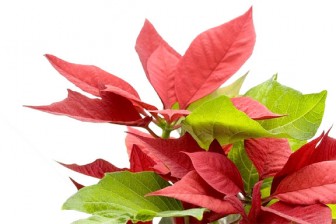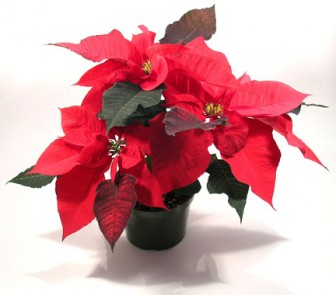Poinsettias have become a symbol of Christmas. The poinsettia (Euphorbia pulcherrima) is originally from Mexico where it was grown by the Aztecs of Central Mexico as a shrub many centuries before it was introduced to the United States by Joel Poinsett – hence the name. It is now grown all over the world in large amounts for the Christmas market as hybrid potted plants.
The poinsettia has velvety green leaves that are toothed.


If you like a challenge, the poinsettia can be planted out in February, after the red bracts falls off, or you can cut the bracts back. Repot the plant by removing some of the old soil, add some regular potting soil to same and fertilize with Miracle Gro All Purpose once every two weeks. Plant will flower naturally twice per year, but not necessarily for Christmas. To bloom for Christmas, plants must have 12 hours of uninterrupted darkness for several weeks in the weeks prior.
NB The stems and bracts if broken give off a milky sap. At all costs avoid contact with the eyes.
Until next week, Happy Gardening





